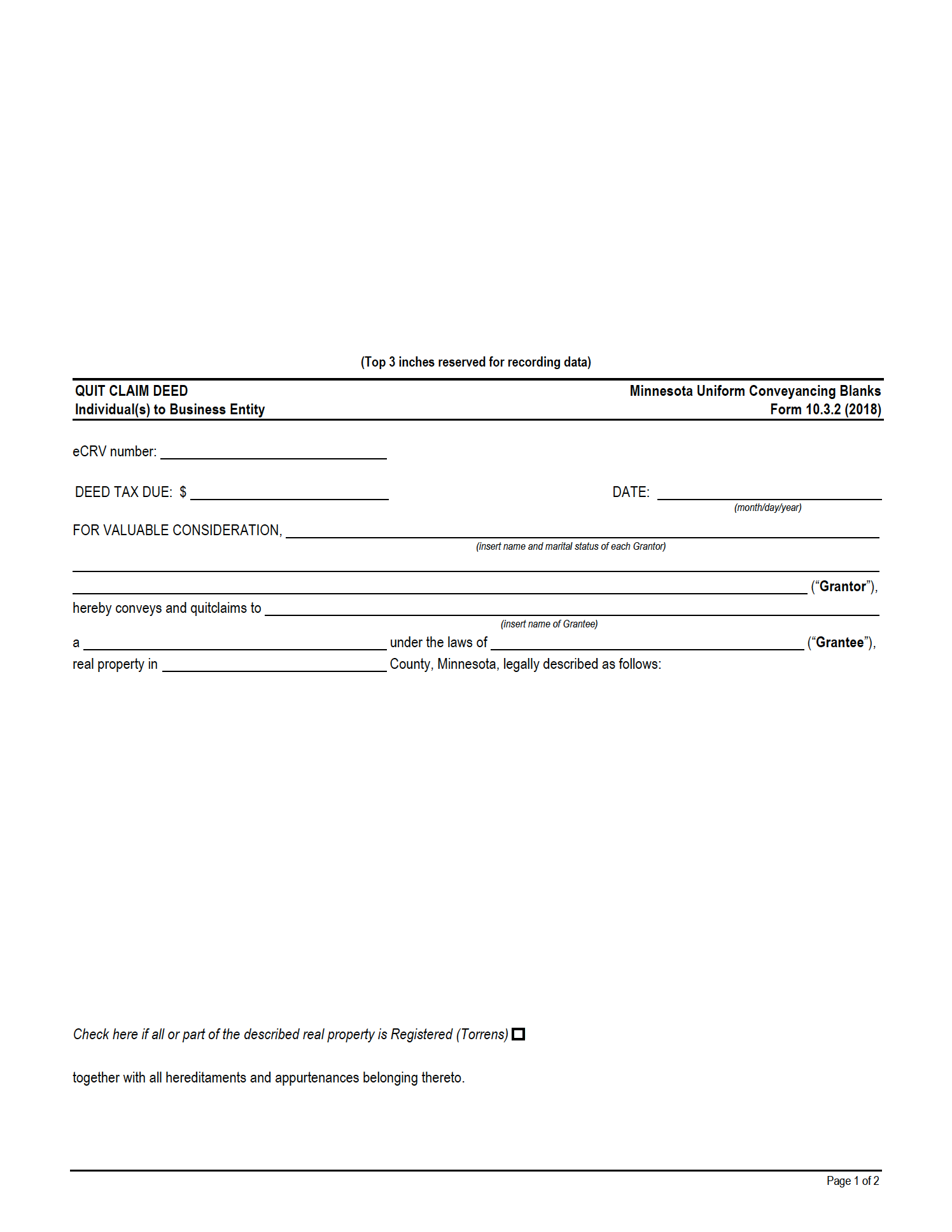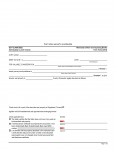

The Minnesota quitclaim deed is a legal document people use in Minnesota for real estate transactions when the title is missing or has a defect. Generally, a Minnesota quit claim deed form should include: Even so, a thorough title search should still be conducted by the buyer. Because of its risky nature, the quit claim deed MN is mostly used for transactions between members of the same family, when trust isn’t an issue. It’s used to transfer ownership from the seller to the buyer, with an explicit mention that the buyer accepts the property without any warranty. But when the seller doesn’t have the title or a way to prove that they are valid owners, the document they need to use is Minnesota quit claim deed. Get legal advice before deciding if a TODD is the best option for you.There are several options when it comes to deeds issued for real estate transactions in the state of Minnesota. For example, if a TODD leaves a house to 4 children and the children are all married, then it would take the agreement of all 8 people (the children and their spouses) for a sale to go through or other change of title on the house. TODDs can work best when they name only 1 or 2 people who get along well with each other. Successors are people who get the property if the beneficiaries die before you. You can also designate one or more successors. But you can have more than one beneficiary on the TODD and lay out how they will hold title to the property. You also need to plan for what will happen if the beneficiary dies before you. A TODD can’t avoid MA liens or estate claims. A TODD can’t stop a surviving spouse or joint tenant from trying to make claims against the property. There may be more problems if you are not the only owner of the property. A TODD may not be the best choice for everyone. With a TODD, you are not giving up your home or any part of your home during your lifetime so these problems are avoided.Īs with any estate planning decision talk to a lawyer about your options. make your children's problems your problems if their name is on your title during your lifetime and they go through divorce, file bankruptcy or get sued.cause tax problems for your children if they want to sell the home after your death.sometimes keep you from getting MA for nursing home care.limit your ability to sell or mortgage your home.But, adding someone's name to the title during your lifetime creates several problems. In the past, the only way to avoid probate if you owned real estate was to add someone's name to the title of the property. there are no properly named beneficiaries either through a TODD or a Payable on Death (POD) Designation.the total of property and money is worth more than $75,000 (the property and money have to be only in the name of the person who dies), and.If you are legally married to someone then they have inheritance rights to the house.Ī TODD can be helpful for estates that don’t need estate tax planning and where the only asset subject to probate is the home. You can’t use a TODD to keep your spouse from getting their interest in real estate at your death. It is important to know that the TODD can’t be revoked by your will.

Unless the TODD says something else, a divorce or annulment will automatically revoke a TODD interest given to your former spouse. If you sell or give your house to someone while you are living, you no longer have an interest to pass to your children through the TODD at your death. You can give all or part of your interest in the property to someone else through a standard deed.The filed TODD with the latest date is the one that is valid. You can file a new TODD, giving the same or a greater interest in the property to someone else.Go to the web page mentioned in second section “How does a TODD work?” Look for forms. You can file a revocation in the county where the property is located.You can cancel (revoke) a TODD in several ways.


 0 kommentar(er)
0 kommentar(er)
